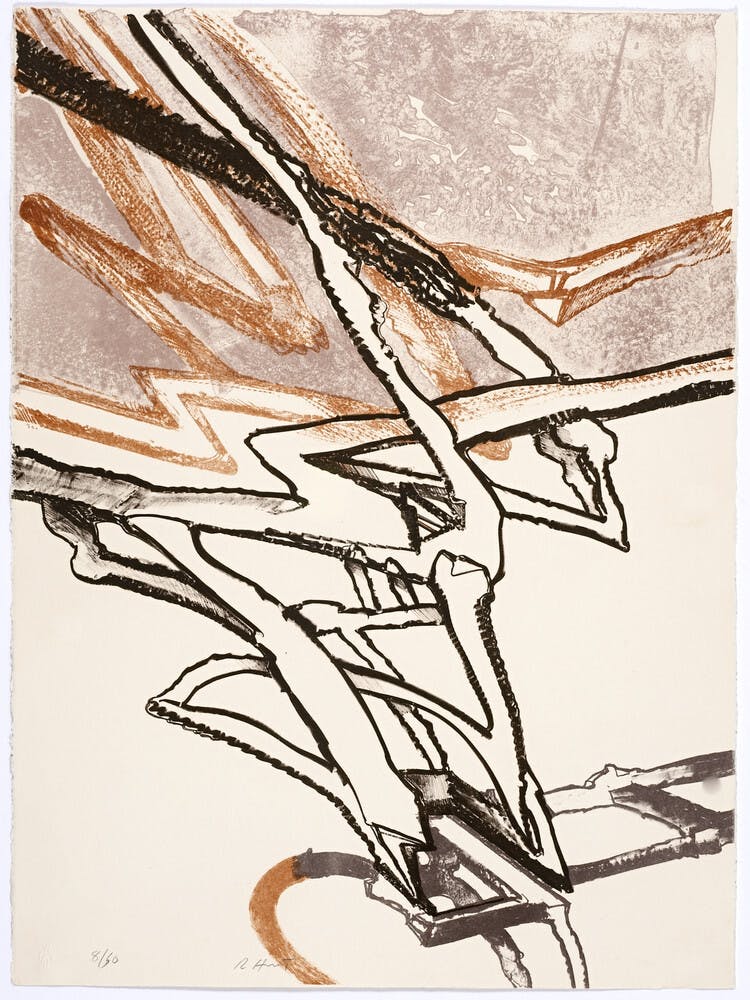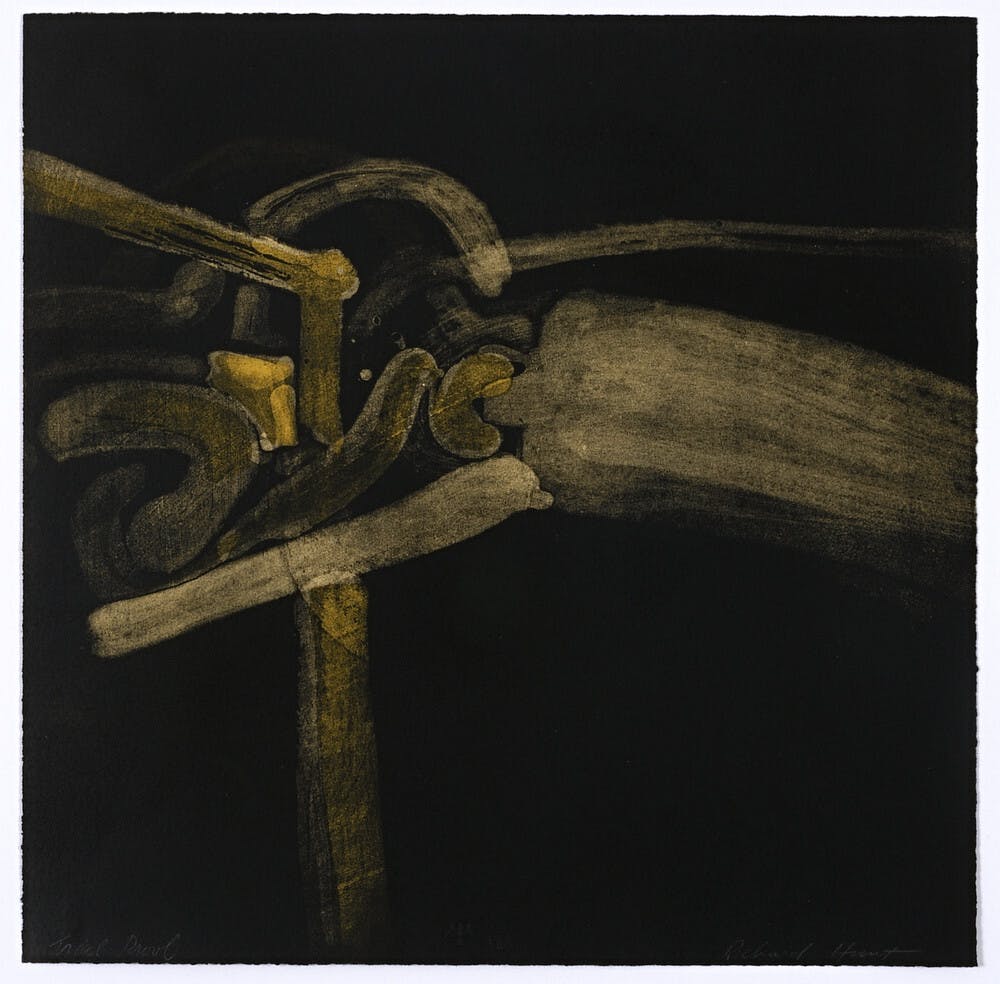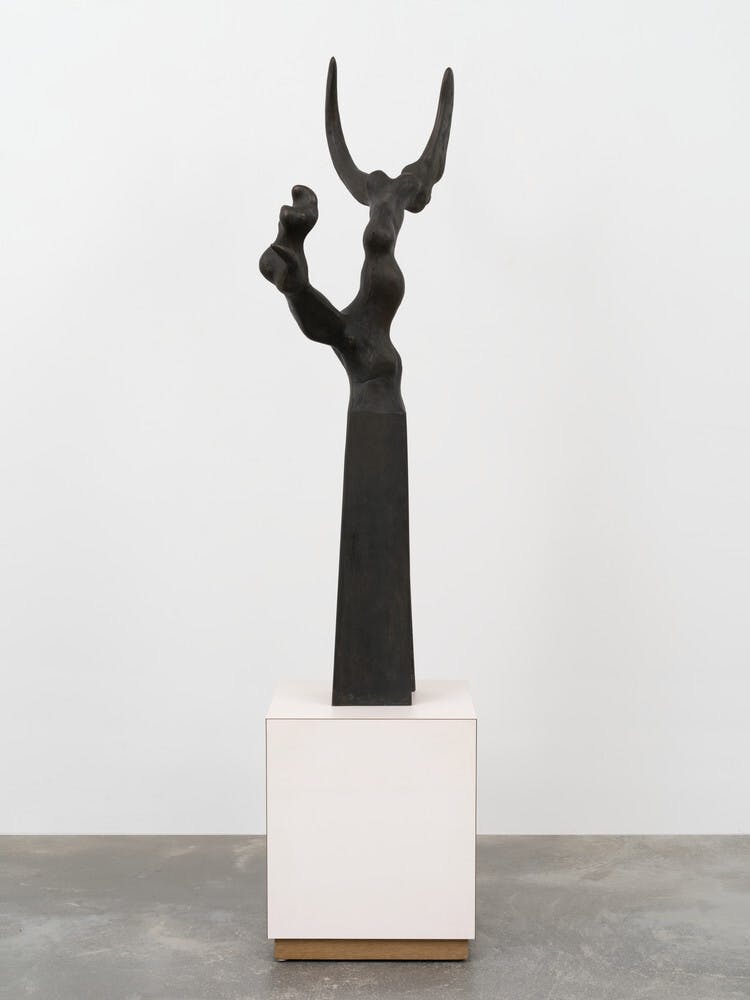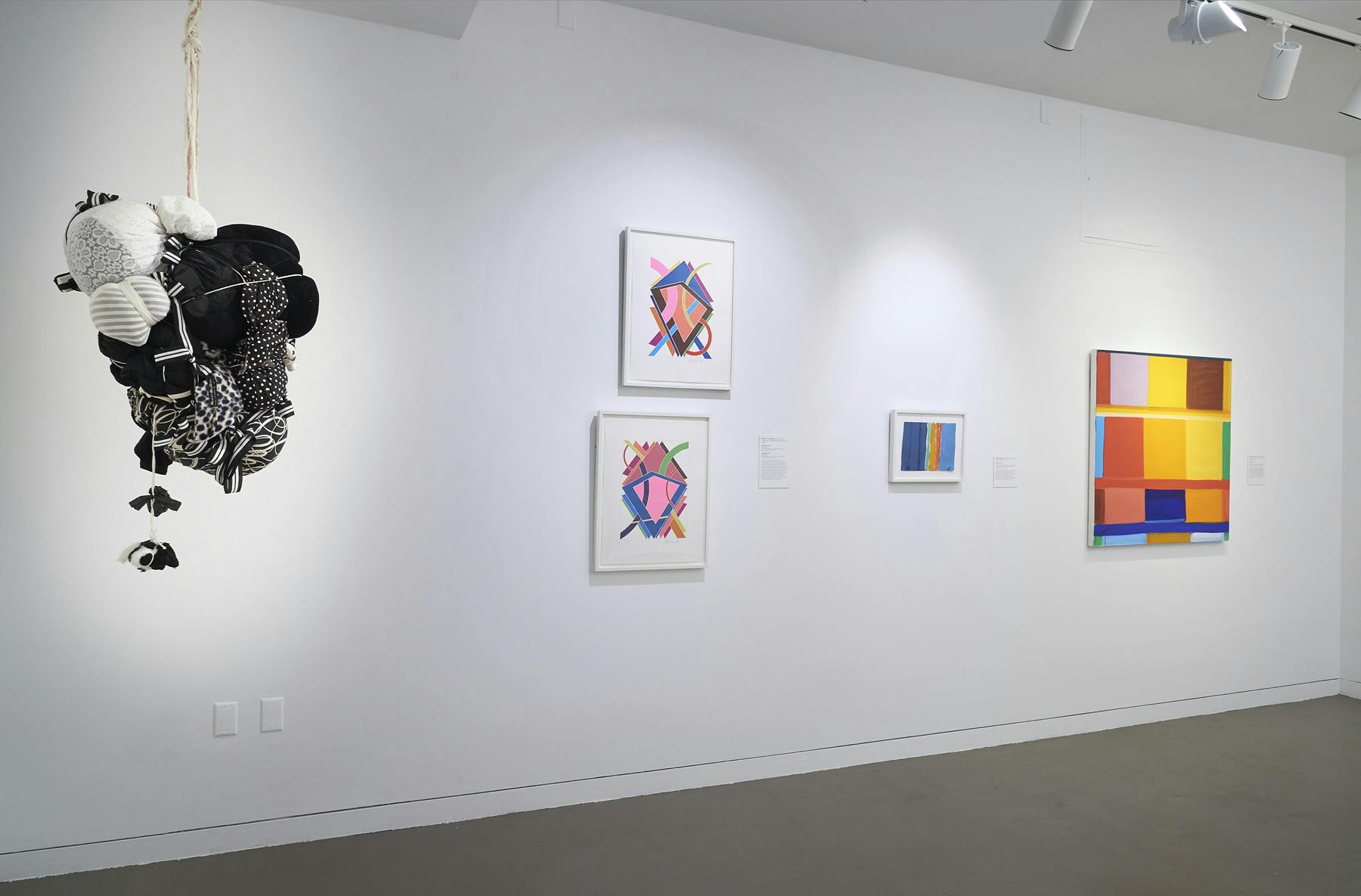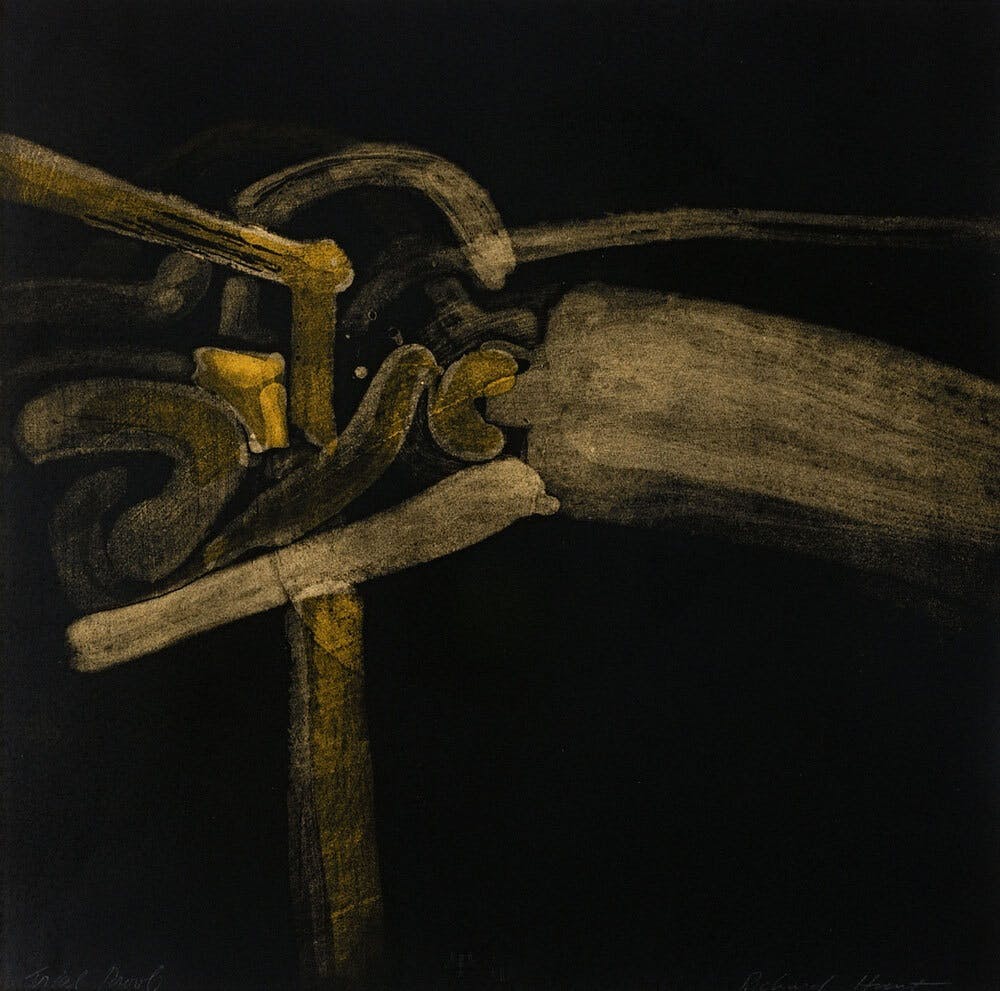Richard Hunt
(1935–2023)Richard Hunt worked intuitively to develop sculptures that reflect on the relationship between the body and the built environment.
Biography
By layering organic and industrial sculptural forms, Richard Hunt meditated on notions of personal and collective freedom within his practice.
He grew up in the Woodlawn neighborhood of Chicago. His mother, a librarian, encouraged him to read and learn classical music and brought him to local opera productions by Black companies. While spending time at his father’s barbershop, he developed an early interest in politics and social issues. At age thirteen, he attended the junior school of the School of the Art Institute of Chicago. Just two years later, he built a sculpture studio in his bedroom and began working with clay. His interest in becoming an artist grew tenfold upon encountering Sculpture of the Twentieth Century, a traveling exhibition at the Art Institute, in 1953. At nineteen, he attended the open-casket funeral of Emmett Till, an experience that profoundly impacted his artistic practice and the civil rights movement.
Hunt enrolled at the Institute to study art education, began working in metal, and learned to weld. He earned several prizes and fellowships that allowed him to travel to England, France, Spain, and Italy. His sculpted creations reference human, animal, and plant forms, and incorporate elements of African American spirituals, history, and mythology. He also twisted or bent scrap and found metal so they appear both weightless and entirely weighed down by the histories, such as sharecropping or the Great Migration, to which the materials allude. Throughout his career, he completed numerous commissioned works of figures including Martin Luther King, Jr., Mary McLeod Bethune, and Ida B. Wells. In addition to his work in sculpture, he was an accomplished printmaker, particularly of lithographs.
Hunt earned his BA from the School of the Art Institute of Chicago. He was the recipient of awards such as a Guggenheim Fellowship (1962); the Harry W. Watrous Prize and Elizabeth N. Watrous Medal from the National Academy of Design (2003); and the Legends and Legacy Award from the Art Institute of Chicago (2022). The Studio Museum has presented his work in exhibitions including The Studio Museum in Harlem: 25 Years of African American Art (1993); Richard Hunt: Growing Forward (1996); and Richard Hunt: Framed and Extended (2016).
Exhibitions and Events
Richard Hunt
(1935–2023)Richard Hunt worked intuitively to develop sculptures that reflect on the relationship between the body and the built environment.
Untitled, 1980
Biography
By layering organic and industrial sculptural forms, Richard Hunt meditated on notions of personal and collective freedom within his practice.
He grew up in the Woodlawn neighborhood of Chicago. His mother, a librarian, encouraged him to read and learn classical music and brought him to local opera productions by Black companies. While spending time at his father’s barbershop, he developed an early interest in politics and social issues. At age thirteen, he attended the junior school of the School of the Art Institute of Chicago. Just two years later, he built a sculpture studio in his bedroom and began working with clay. His interest in becoming an artist grew tenfold upon encountering Sculpture of the Twentieth Century, a traveling exhibition at the Art Institute, in 1953. At nineteen, he attended the open-casket funeral of Emmett Till, an experience that profoundly impacted his artistic practice and the civil rights movement.
Hunt enrolled at the Institute to study art education, began working in metal, and learned to weld. He earned several prizes and fellowships that allowed him to travel to England, France, Spain, and Italy. His sculpted creations reference human, animal, and plant forms, and incorporate elements of African American spirituals, history, and mythology. He also twisted or bent scrap and found metal so they appear both weightless and entirely weighed down by the histories, such as sharecropping or the Great Migration, to which the materials allude. Throughout his career, he completed numerous commissioned works of figures including Martin Luther King, Jr., Mary McLeod Bethune, and Ida B. Wells. In addition to his work in sculpture, he was an accomplished printmaker, particularly of lithographs.
Hunt earned his BA from the School of the Art Institute of Chicago. He was the recipient of awards such as a Guggenheim Fellowship (1962); the Harry W. Watrous Prize and Elizabeth N. Watrous Medal from the National Academy of Design (2003); and the Legends and Legacy Award from the Art Institute of Chicago (2022). The Studio Museum has presented his work in exhibitions including The Studio Museum in Harlem: 25 Years of African American Art (1993); Richard Hunt: Growing Forward (1996); and Richard Hunt: Framed and Extended (2016).
